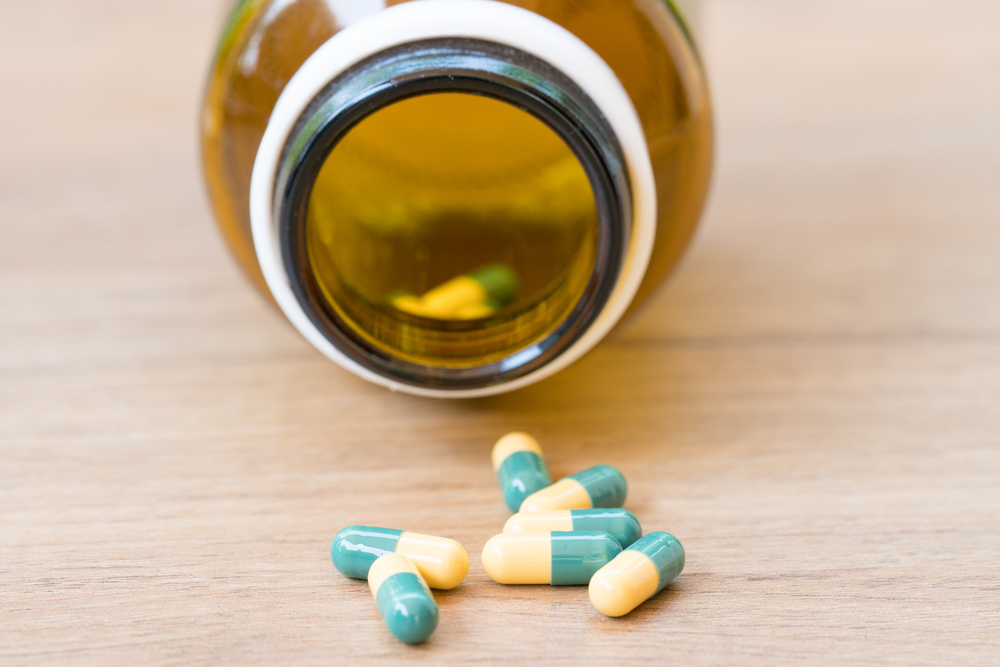
Tramadol is an opioid and is the 35th most commonly prescribed drug in America, with almost 20 million prescriptions in 2019 alone. Tramadol is a narcotic, meaning there is a risk for abuse and addiction, even when taken as prescribed.
Although tramadol has low abuse potential relative to morphine and other opioids, tramadol can still be misused and lead to physical dependence and addiction.
What Is Tramadol Used For?
As an opioid, tramadol is used to treat moderately severe pain. The package labeling for tramadol instructs doctors to make sure that pain cannot be controlled by non-opioid strategies before prescribing tramadol.
How Long Does Tramadol Last?
Like other opioids, tramadol can last a varying amount of time depending on whether a short-acting or a long-acting form of the drug is taken.

It's time to get your life back.
If you are struggling with addiction and co-occurring mental health, our expert team is here to guide you every step of the way. Don’t wait— reach out today to take the first step toward taking control of your life.
Tramadol’s pain-relieving effects start to kick in within one hour. Short-acting tramadol will then have its peak effect within 2–3 hours and will last about 4–6 hours. In contrast, long-acting tramadol will have its peak effect within 4–12 hours, and the drug will last about 24 hours.
How Long Does Tramadol Stay in Your System?
Although tramadol’s pain-relieving effects may wear off within a few hours, the drug can stay in your system for much longer. Tramadol can be detected in the urine, hair, saliva and blood:
- Urine: Tramadol can be detected for up to four days.
- Hair: Tramadol can be detected for at least 90 days in a 1.5-inch hair sample.
- Saliva: Tramadol can be detected for up to two days.
- Blood: Tramadol can be detected for up to 10 hours.
Several factors can influence how long tramadol is detectable on a drug test:
- Your tramadol dose
- How often you take tramadol
- Whether you take the short- or long-acting form of tramadol
- Your age
- Your body composition
- Your sex
- Your overall health
- Whether you take other medications or substances
- Your overall hydration and nutritional status
Tramadol Dosage
Experts recommend using the lowest possible tramadol dose for the shortest period of time possible due to the risks of this controlled substance. For someone who has not taken an opioid before, it is common to start with short-acting tramadol at a dose of 25 mg daily, and then slowly increase the dose as needed to a maximum total daily dose of 400 mg.
If short-acting tramadol is not sufficient in managing pain, long-acting tramadol can be started at a dose of 100 mg daily. The dose may then be slowly increased to a max dose of 300 mg.
What Does Tramadol Look Like?
Tramadol comes in multiple dosage forms. However, because it is made by multiple manufacturers, tramadol’s appearance can vary widely. Tramadol’s dosage forms include:
- Short-acting tablet
- Extended-release tablet
- Short-acting oral liquid
- Extended-release capsule
A reputable pill identifier can help you decide if the drug you’re holding is tramadol or not.
Is Tramadol Addictive?
Tramadol is a Schedule IV controlled substance, meaning that it carries a risk of abuse, dependence and addiction. While tramadol is comparatively weaker than other opioids, it is still a narcotic and carries addiction risks.
If you think you or someone you love may have a tramadol use disorder, be aware of the following signs and symptoms:
- Using more tramadol than prescribed
- Using tramadol multiple times a day
- Claiming medication is lost to get a new prescription
- Visiting multiple doctors or pharmacies to get more prescriptions
- Asking friends or family members to fill a prescription for them
- An obsession with getting more tramadol
Tramadol Side Effects
When a person takes tramadol, the way the brain and nerves process pain signals is modified. Like heroin, hydrocodone and all other opiates, tramadol binds to the brain and spine’s opioid receptors. This produces the intentional pain-relieving effects when taken as prescribed, and the euphoria when the drug is misused.
Although tramadol is not as strong as other commonly-misused opiates like hydrocodone or morphine, it still has many potential side effects:
- Difficulty falling asleep
- Constipation
- Headache
- Dizziness
- Diarrhea
- Nausea
- Dry mouth
- Sweating
- Loss of appetite
- Tremors
Tramadol and Alcohol
You should avoid taking tramadol and alcohol together due to additive side effects that can occur. The main risk of drinking while taking tramadol is worsened central nervous system depressant side effects. These can include extreme sedation and slowed breathing, which could lead to coma and death in severe cases.
For this reason, the FDA issued a Boxed Warning about the risks of alcohol or other central nervous system depressants while taking tramadol.
It is best to wait until a dose of tramadol is completely out of your system before you have a drink. Short-acting tramadol has a half-life of approximately six hours, meaning it takes that long for your system to remove half the drug from your body. Since it generally takes five half-lives to completely metabolize a drug, a single dose of short-acting tramadol could be out of your system within about 30 hours.
As the name implies, long-acting tramadol lasts longer than short-acting tramadol. It has a half-life of around 10 hours, meaning it can take your body about 50 hours to completely get rid of the drug. Waiting until the tramadol is out of your body before you have a drink can both help avoid side effects and reduce your risk of overdose.
Tramadol Overdose
If a person takes too much tramadol, they may overdose. Tramadol overdose symptoms differ slightly from other opioids and include slowed breathing and seizures, which can be fatal in some cases.
The opioid overdose reversal medication, naloxone or Narcan, may not always reverse a tramadol overdose. This is because naloxone is only partly effective against tramadol. In addition, naloxone itself can cause seizures, which is a symptom of tramadol overdose.
If you suspect a person is overdosing on tramadol, call 911 right away. Give naloxone if available, but be aware that it might not work well in cases of tramadol overdose.
The amount of tramadol that can cause an overdose varies based on tolerance and genetics. Tolerance refers to how much drug your body is used to taking. For example, if you usually take a low tramadol dose and suddenly take a high dose, your risk for an overdose increases.
Genetics also plays a role in tramadol overdose. Tramadol is broken down by a liver enzyme called CYP2D6, and depending on your genes for this enzyme, your body may produce less of this enzyme than others. For this reason, some people may be more susceptible to tramadol overdose than others.
Tramadol Withdrawal
If a person develops a physical dependence on tramadol, suddenly stopping the medication will result in tramadol withdrawal symptoms, even if the medication was taken as prescribed.
To avoid withdrawal, doctors recommend tapering tramadol, or slowly decreasing the drug dose over time. With a taper, your brain and body can comfortably adjust to functioning without the drug. For this reason, it is vital to talk to your doctor before deciding to stop tramadol on your own. Your doctor can create a tramadol taper for you, or they may refer you to a specialized medical detox center if you’ve been misusing or abusing the drug and struggle to stop.
Tramadol Withdrawal Symptoms
Tramadol has similar withdrawal symptoms to other opioids:
- Restlessness
- Agitation
- Anxiety
- Runny nose
- Sneezing
- Coughing
- Sweating or chills
- Trouble sleeping
- Muscle pain or twitching
- Numbness or tingling in the hands and feet
Tramadol withdrawal can last different amounts of time, depending on the dosage. For short-acting tramadol, withdrawal symptoms may start within 12 hours of the last dose, peaking within 1–2 days and may improve over the next 3–5 days. In contrast, long-acting tramadol withdrawal symptoms may begin 30 hours after the last dose and can last up to 10 days.
Tramadol Detox
During tramadol detox, you stop taking tramadol, which allows your body to slowly cleanse itself of the medication. Although it may be tempting to detox at home, it is often recommended to detox in a medically supervised setting, especially if you have co-occurring mental or physical health conditions.
In a medically supervised detox program, you are admitted to a facility that provides around-the-clock care from doctors and nurses. Medical professionals help alleviate withdrawal symptoms, which ensures the most comfortable and safest detox experience possible and sets you up for long-term sobriety.
Tramadol Addiction Treatment
If you or someone you love needs help quitting tramadol, we can help. At The Recovery Village Ridgefield, we are dedicated to helping patients thrive on their lifelong recovery journey. We offer medical detox, inpatient programs, partial hospitalization programs, intensive outpatient programs and aftercare for tramadol addiction treatment We also offer telehealth options.
We have two facilities in the Pacific Northwest, including our 16-bed detox center in Ridgefield, WA and our 32-bed addiction treatment center in Vancouver, WA. Patients enjoy a variety of amenities, including:
- Nutritious meals
- Art therapy
- Music therapy
- Exercise gyms
- Basketball court
If you struggle with tramadol, help is a phone call away. Give us a call today to speak with a representative about treatment options that can work for you. We are here for you 24 hours a day, seven days a week.

